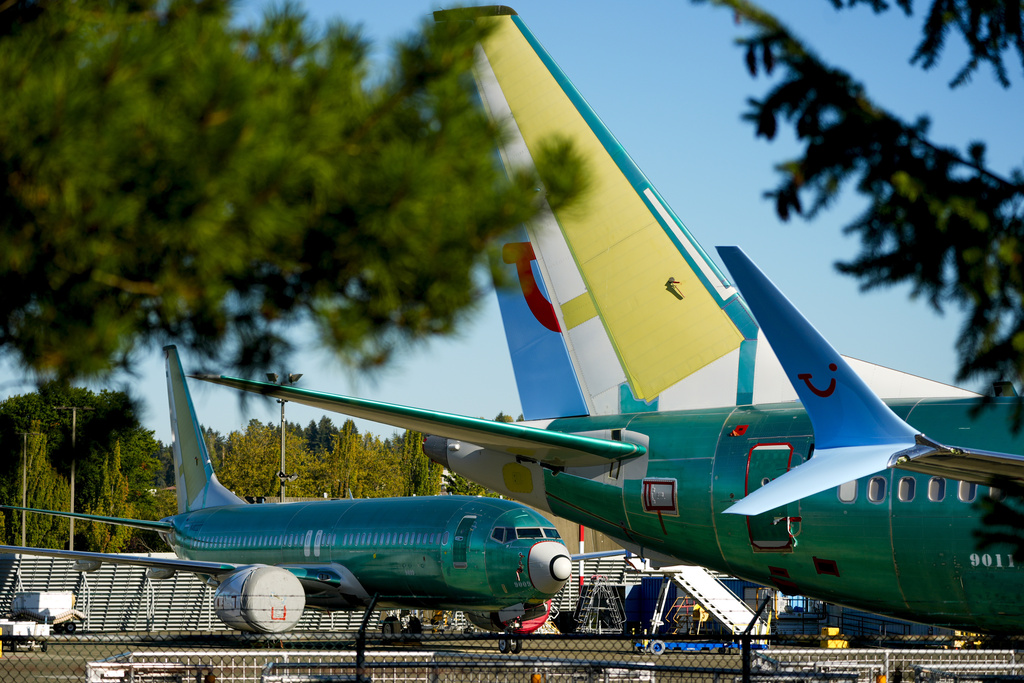Boeing to Cut 17,000 Jobs Amid Financial Struggles and Strike \ Newslooks \ Washington DC \ Mary Sidiqi \ Evening Edition \ Boeing plans to lay off about 17,000 employees, or 10% of its workforce, as the company struggles with financial losses and a crippling strike. CEO Kelly Ortberg announced the layoffs, including executives and managers, while also delaying the 777X rollout to 2026 and halting the 767 cargo jet in 2027. Boeing lost $1.3 billion in the third quarter and faces significant challenges with ongoing union strikes and project delays.
Boeing to Cut Workforce Amid Financial Struggles: Quick Looks
- Boeing plans to lay off 10% of its workforce, impacting 17,000 employees.
- The layoffs affect executives, managers, and production staff in facilities across Washington and South Carolina.
- Ongoing union strikes and delayed production timelines have worsened Boeing’s financial difficulties.
- Boeing’s 777X rollout is delayed to 2026, and the 767 cargo version will stop production in 2027.
- The company posted a third-quarter loss of $1.3 billion, with major write-downs from defense and space programs.
Deep Look
Boeing, one of the world’s largest aerospace manufacturers, has announced plans to lay off around 10% of its workforce, equating to about 17,000 employees, as it grapples with ongoing financial difficulties and a crippling strike by union machinists. This decision comes amid multiple challenges that have plagued the company over the past few years, including production delays, regulatory scrutiny, and massive cash burn. New CEO Kelly Ortberg made the announcement in a company-wide memo on Friday, stating that the layoffs will impact executives, managers, and production workers across the U.S.
Boeing, which employs approximately 170,000 people worldwide, has key manufacturing hubs in Washington and South Carolina, where many of the layoffs will take place. The company has been struggling to keep production on track due to the ongoing strike by union machinists, which began on September 14. The strike has stalled the production of Boeing’s best-selling aircraft, including the 737 Max, 777s, and 767s. Despite Boeing’s efforts to resolve the labor dispute, recent talks with the International Association of Machinists and Aerospace Workers (IAMAW) failed to produce a deal, prompting Boeing to file an unfair-labor-practices charge against the union.
Boeing’s production issues have been exacerbated by its financial woes. The company reported burning through $1.3 billion in cash during the third quarter and posted a loss of $9.97 per share—far worse than the $1.61 per share loss industry analysts had expected. This significant loss was partly driven by large write-downs, including a $2.6 billion charge related to delays in the development of the 777X aircraft, $400 million for delays in the 767, and $2 billion for defense and space programs, which include high-profile projects like new Air Force One jets, a space capsule for NASA, and military refueling tankers.
The 777X, Boeing’s next-generation aircraft, was originally slated to debut in 2025, but the company has now delayed its rollout to 2026 due to ongoing development challenges and financial constraints. Additionally, Boeing announced that it will cease production of the cargo version of its 767 jet in 2027 after completing current orders, further signaling a slowdown in its production pipeline.
Ortberg, who took over as Boeing’s CEO in August, is tasked with steering the company through this difficult period. He is Boeing’s third CEO in less than five years, stepping into a role fraught with significant challenges, including addressing the company’s massive losses, restoring production capabilities, and resolving labor disputes. In his memo to employees, Ortberg acknowledged the severity of the situation, stating, “Our business is in a difficult position, and it is hard to overstate the challenges we face together. This requires tough decisions, and we will have to make structural changes to ensure we can stay competitive and deliver for our customers over the long term.”
Boeing has faced a host of challenges in recent years, beginning with the grounding of its 737 Max aircraft following two fatal crashes in 2018 and 2019. The crashes, which claimed the lives of 346 people, triggered regulatory scrutiny and legal battles that have continued to weigh heavily on Boeing’s reputation and financial performance. The Federal Aviation Administration (FAA) increased its oversight of Boeing, and the company has since agreed to plead guilty to conspiracy charges related to misleading regulators about the safety of the 737 Max. This legal settlement includes a hefty fine, but families of the crash victims continue to call for tougher punishment.
The FAA’s scrutiny of Boeing intensified again earlier this year after a panel blew out of a 737 Max during an Alaska Airlines flight. This incident, combined with delays in the rollout of the 777X and other high-profile projects, has further eroded confidence in Boeing’s ability to deliver on its promises. Additionally, NASA recently rejected a Boeing spacecraft, citing safety concerns, which prevented it from carrying two astronauts back from the International Space Station. These setbacks have tarnished Boeing’s standing in both commercial aviation and the defense and space sectors.
In the midst of these issues, Boeing’s ongoing strike by 33,000 union machinists continues to disrupt production. The strike, which began over disagreements regarding pay and working conditions, has had a direct impact on Boeing’s cash flow. The company typically receives a significant portion of payments for its aircraft upon delivery to airline customers. With production halted on the 737 Max, 777s, and 767s, Boeing’s cash flow has taken a significant hit. The company is still producing 787 Dreamliners at its non-union facility in South Carolina, but the strike has created major bottlenecks in its overall production capacity.
Boeing’s financial situation remains dire. In addition to the $1.3 billion in cash burned during the third quarter, the company reported having $10.5 billion in cash and marketable securities as of September 30. However, this amount may not be sufficient to cover Boeing’s ongoing costs, especially given the massive write-downs and operational losses the company continues to face. Boeing is scheduled to release its full third-quarter financial results on October 23, which will likely provide further insight into the company’s financial standing and future outlook.
Ortberg and his leadership team are focused on implementing structural changes to stabilize Boeing’s business and regain investor confidence. However, the road ahead will be challenging, as the company contends with the fallout from the strike, delayed production timelines, and increasing competition in both the commercial and defense sectors. Boeing’s leadership is also working to rebuild trust with regulators, airline customers, and the public, who remain wary after the 737 Max disasters and other high-profile failures.
Despite these challenges, Boeing remains a crucial player in the aerospace industry, with a strong backlog of orders and continued demand for its aircraft. The company’s ability to navigate this difficult period will depend on its capacity to resolve labor disputes, streamline production processes, and restore confidence in its products and leadership.







